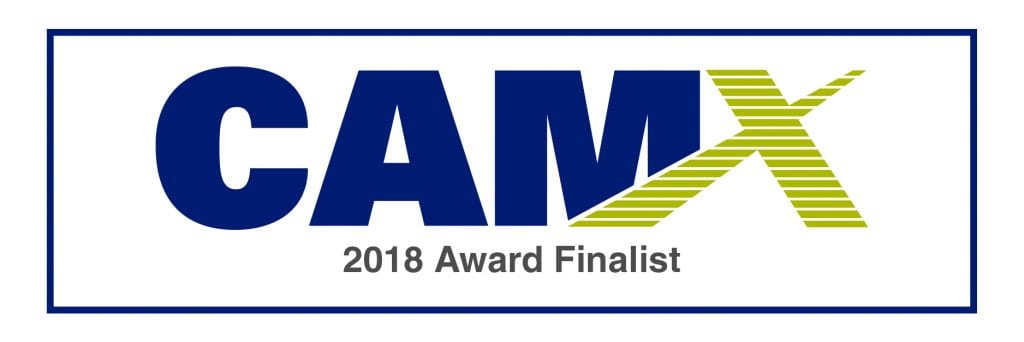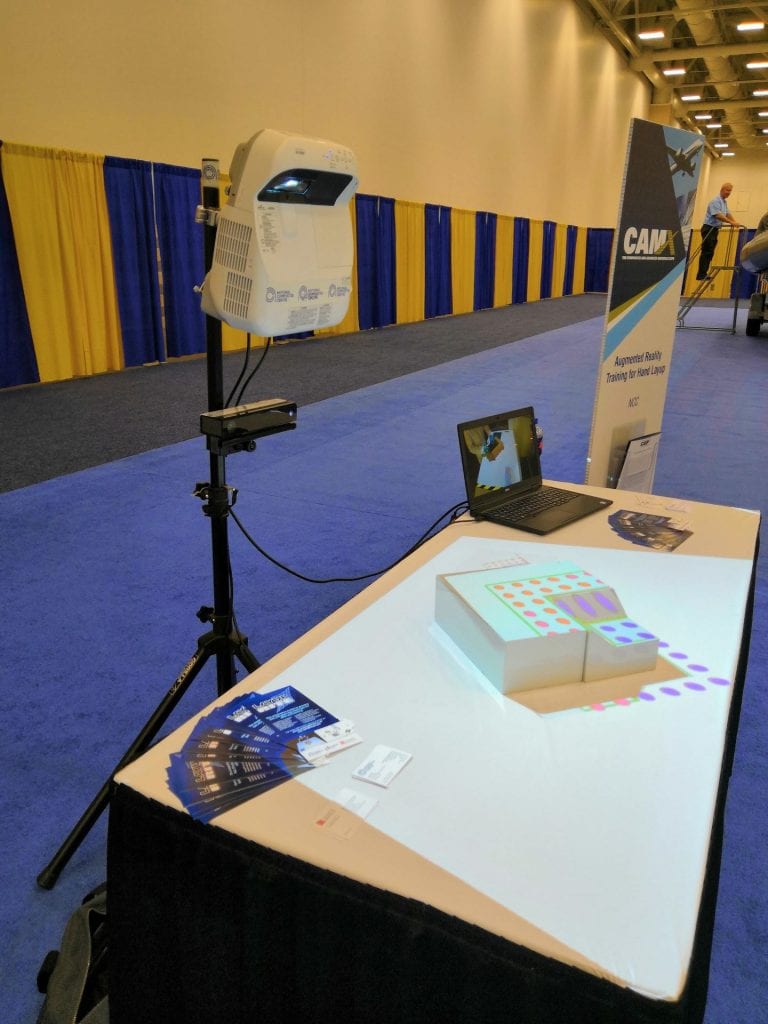CAMX is the largest composites expo in North America, and one of the largest in the world. In 2018 the expo was held in Dallas, Texas. As part of CAMX there are competitions for innovation and research in the field of composites. As a project, we decided that LayupRITE should apply for the Combined Strength Award and Much to our surprise LayupRITE was shortlisted as one of the seven finalists for the Combined Strength Category. This meant that LayupRITE would have an exhibit space in competition area at the CAMX trade show.
 The expo took place between the 15th and 18th of October 2018 in the Kay Bailey Hutchinson Convention Centre in Dallas. Being at the exhibit stand in the awards area at the show meant that LayupRITE got a lot of foot traffic with people curious about the project, the technology and its uses. The entire experience gave LayupRITE valuable international exposure and gave us a lot of interesting feedback and possible use cases.
The expo took place between the 15th and 18th of October 2018 in the Kay Bailey Hutchinson Convention Centre in Dallas. Being at the exhibit stand in the awards area at the show meant that LayupRITE got a lot of foot traffic with people curious about the project, the technology and its uses. The entire experience gave LayupRITE valuable international exposure and gave us a lot of interesting feedback and possible use cases.

The winner in the Combined Strength category was the XSTRAND project from Owens Corning, but being shortlisted for an award at such a large and prestigious show like CAMX was praise enough in and of itself. Looking forward to CAMX 2019!




